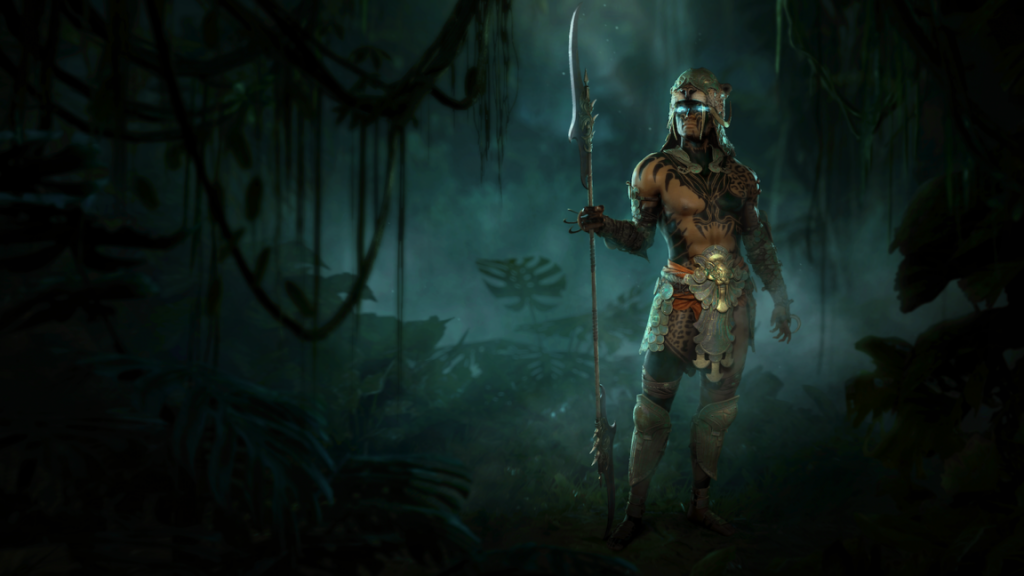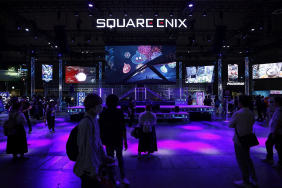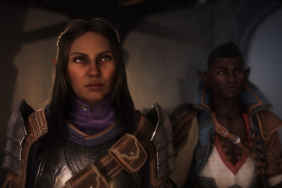The age-old debate in the gaming community revolves around motivations for playing video games. Are players drawn to video games for the challenge, seeking the satisfaction of overcoming obstacles? Or do they prefer the escapism that comes with wielding extraordinary powers, often unattainable in the real world?
This discussion is particularly pertinent within the role-playing game (RPG) genre, which focuses on character progression. Players witness their avatars evolve from humble beginnings, often transformed into powerful entities capable of vanquishing foes and reshaping their virtual worlds.
However, the excitement that comes with power tends to diminish if there’s no accompanying challenge. Even omnipotence can grow tedious over time.
This raises critical questions for game designers: How do you strike a balance between providing a fulfilling challenge while ensuring players feel rewarded and empowered? What strategies can help maintain a sense of difficulty when player characters grow stronger at varying paces?
To shed light on this balance, insights were gathered from designers of two contrasting games: the expansive, live service title Diablo IV, which must offer a consistent player experience over time, and Darkest Dungeon II, an indie title known for its punishing difficulty while still facilitating character growth.
Exploring Challenge
Setting an appropriate difficulty level is a challenging aspect of game design, especially in the vast worlds of modern RPGs. While some players thrive on adversity, others prefer a more casual experience.
“I see challenge as a vast ocean,” stated Aislyn Hall, systems designer for Diablo IV at Blizzard Entertainment. “Some players are content to simply follow along on whatever journey we craft, while others want the freedom to navigate their own way.”
Hall acknowledges that player preferences for difficulty vary widely, meaning a singular approach isn’t feasible, especially for a franchise as expansive as Diablo.
“In the beginning, we act as the player’s captain, providing guidance in new territories,” she explained. However, she emphasized the importance of adjusting difficulty levels as players progress.
In contrast, the approach taken by Darkest Dungeon II is distinctly different. Design Director Tyler Sigman explained that the team’s philosophy revolves around creating an uncompromising experience.
“We emphasize a strict set of rules and transparency in gameplay mechanics,” Sigman noted. “This makes the game fair but also unyielding, reminiscent of a dungeon master rolling dice in plain view.”
For the team behind Darkest Dungeon II, ensuring that every small victory feels hard-earned is crucial. They intentionally allow game mechanics to remain unpredictable, leading to harsh consequences at times.
“We frequently receive inquiries about whether we manipulate random number generation to cause difficulty,” Sigman explained. “The brutal nature of our game arises from the absence of manipulation.”
Empowering Players
Role-playing games, originating from tabletop formats, promise an escape from reality by giving players agency in shaping their environment. Part of fulfilling this promise involves enabling character development, though the degree to which this is emphasized can differ significantly among developers.
“It’s critical that players feel powerful in any game,” Hall asserted, highlighting that this sense of empowerment varies by genre. “In a gardening game, for example, power translates to choosing what crops to plant. In contrast, in a game about battling demons, power manifests through your ability to vanquish foes.”
In action-oriented scenarios, players may feel empowered through their arsenal or the ease with which they defeat enemies. Regardless of the gameplay context, Hall believes that power is best appreciated within the framework of challenge.
“The dynamic of an unyielding obstacle versus a relentless player creates a vivid sense of empowerment,” Hall elaborated.
In Darkest Dungeon II, the emphasis is more on recognizing characters’ vulnerabilities rather than highlighting strengths. Sigman expressed that their vision is to ensure heroes do not appear invincible.
“From the start, we committed to the idea that heroes must feel mortal,” he said. “Our internal mantra has always been that ‘heroes are human,’ emphasizing vulnerability and the risks associated with survival.”
Achieving Balance
Within the extensive worlds of games like Diablo IV, maintaining a delicate equilibrium between character power and challenge presents ongoing complexities. Additionally, player skills and understanding evolve throughout the gameplay experience. Hall mentioned that the team employs a “complexity budget” to navigate this balance.
“This budget translates into how much information a player can handle based on their familiarity with the game,” she explained. “At the start, we prioritize simplicity, ensuring players grasp how an ability benefits them.”
As players advance and become acquainted with game mechanics, the complexity in abilities and rewards grows accordingly.
“With progression, that budget increases, making gameplay more intricate as players become ready for more nuanced mechanics,” Hall noted.
Balancing challenge levels occurs concurrently, as Hall warned against introducing excessive difficulty early on, which can deter players, while easing off in later stages leaves gameplay feeling flat. Players have often experienced moments where their characters grow so powerful that challenges become trivial.
The launch of Diablo IV’s first major expansion, Vessel of Hatred, opened opportunities for reevaluating the difficulty curve.
“We recognized that player power was outpacing our previous difficulty scaling,” Hall recalled. “During the design of the Torment system, we audited player capabilities and reassessed the appropriate difficulty tiers.”
This new Torment system introduces four additional difficulty levels, allowing players to select their challenge level with corresponding rewards. Enhancements include increased enemy damage and health, as well as adjusted player survivability. Hall emphasized focusing on enemy distribution among tiers, ensuring that weaker foes are found at lower levels and tougher adversaries at higher tiers, aiding in creating a nearly limitless gameplay experience.
Conversely, Darkest Dungeon II intentionally leans heavily toward challenge. Sigman noted that their approach layers significant difficulty right from the start rather than easing players in with undemanding gameplay.
“With Darkest Dungeon, you are perpetually in danger,” he cautioned. In fact, the game permits characters to face peril even during the tutorial stages.
“Our goal is to keep players in a position of vulnerability throughout,” Sigman said, “ensuring that accomplishments feel hard-earned.”
Nevertheless, the intent is not punitive. Players can often become frustrated when confronted by overly difficult challenges, potentially leading to disengagement.
“The experience must still foster a sense of achievement and growth,” Sigman explained. “While providing a consistent challenge, we avoid letting players feel like gods. Growth occurs through skill upgrades and equipment discoveries during a run, alongside metagame progression such as unlocking new characters and enhancing base stats.”
Sigman agrees with Hall that progression can also significantly occur within players themselves—through experiences and knowledge gained over time.
“In many ways, knowledge is as valuable as stat enhancements,” he said. “Strategic play can lead to better long-term results than pure luck, similar to poker.”
Understanding that their player base is diverse, Sigman mentioned that the team offers various optional difficulty features, catering to a range of player preferences. The Radiant Flame system provides helpful boosts for players who struggle, while Infernal Flames introduce more rigorous challenges for those seeking heightened difficulty.
In a more traditional design approach, Darkest Dungeon II unveiled a difficulty system through a free update called Kingdoms, allowing players to determine the level of challenge they wish to face.
“Upon starting a Kingdom, players choose between Radiant, Normal, Stygian, or Bloodmoon rulesets, impacting hero respawning and other parameters,” Sigman explained.
Evolving Design
The dynamic nature of live-service games means that designers must remain vigilant in maintaining balance. New elements introduced through updates or expansions can shift the delicate interplay between power and challenge.
“Adjustments to balance can happen frequently,” Hall noted. “It largely depends on the audiences we aim to serve.”
Players often experience a sense of disorientation when returning to a game post-expansion, while veterans may feel disregarded when new content alters the established gameplay experience.
“With the launch of Vessel of Hatred, we focused on perfecting the early to mid-game progression, anticipating that many new and returning players would join,” Hall explained. As the player base evolves, the team shifts its focus to enhance later game experiences based on player feedback and preferences.
For the Darkest Dungeon team, establishing a solid design philosophy is essential, though the specifics may adapt throughout development. “With ongoing updates, balance is a continually changing entity,” Sigman stated, emphasizing the need for flexibility.
The risk accompanying each update lies in the potential to disrupt existing game mechanics. “It’s a challenging process,” Sigman admitted. “While many players eagerly await updates, some react negatively to changes in balance.”
Players often invest heavily in specific strategies; thus, alterations can deeply affect gameplay experience. Sigman noted that a blend of mathematical tools and philosophical considerations guide their balancing decisions.
“Addressing exploits offers a good example—while some tackle them quickly, I believe single-player games can afford to give players some leeway,” Sigman commented. “Letting players experience minor exploits can contribute to enjoyment.”
The balance of challenge and empowerment ultimately returns to a simple principle. “A valuable piece of advice from my favorite designer, Sid Meier, is to reflect on who is truly enjoying the game: the designer or the player?” Sigman concluded. “The player should always come first.”
This mindset resonates with players, emphasizing that any decisions to increase difficulty should enhance the enjoyment of the game experience. If players feel that developers are scaling down their power arbitrarily, it could lead to frustration rather than fun.
The intricate balance between power and challenge remains one of the most complex aspects of game design. Ultimately, players seek engaging experiences—whether that’s feeling omnipotent, triumphing over formidable foes, or finding satisfaction in navigating the fine line between challenge and empowerment.






